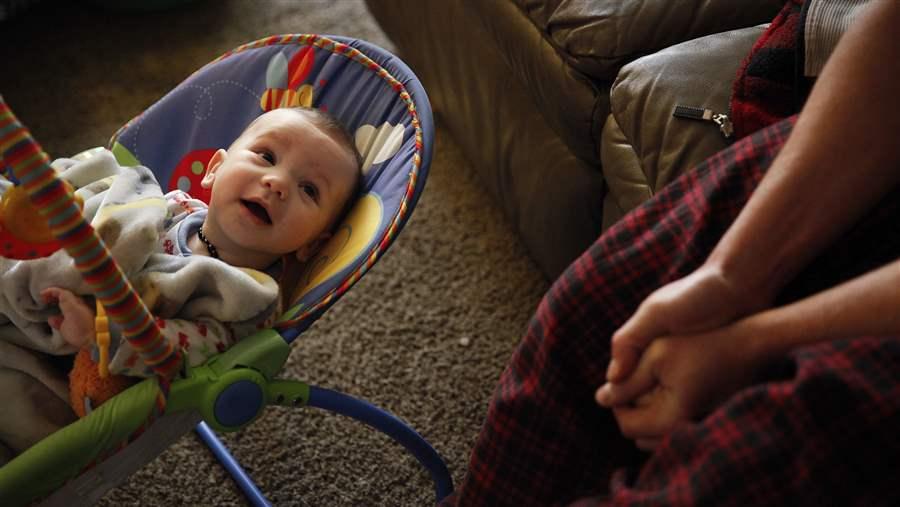Childhood Lead Exposure
Prevention and response

Charles White at home in Flint, Michigan, with his youngest son, Vaughn, 5 months, who tested high for levels of lead.
© Sarah Rice/The New York Times/Redux
The crises in Flint, Michigan, and East Chicago, Indiana, and the surge of reports from other communities have brought renewed attention to the problem of childhood lead poisoning. Millions of children and expectant mothers may be exposed to unsafe levels of lead in their homes, neighborhoods, and schools. According to the Department of Housing and Urban Development, as many as 37.1 million homes have lead paint. If it chips, peels, or is sanded during a renovation, the resulting dust can be ingested. The paint can also contaminate the soil outside and be tracked into homes.
Lead can also get into drinking water through leaded supply lines and through plumbing fixtures. Estimates from the Environmental Protection Agency and the American Water Works Association suggest that 5.5 million to 10 million lead service lines remain in the United States, providing water to at least 22 million people. Lead is also found in aviation fuel, food, makeup, and other consumer products.
Doctors agree that there is no safe level of lead in the body and that it is especially dangerous for young children because their brains are still developing. Studies have linked childhood lead exposure to serious health problems later in life, including hypertension, impaired cognition, poor academic performance, and behavioral problems. Children poisoned by lead are more likely to struggle in school, drop out, get into trouble with the law, and under perform in the workplace.
Preventing lead exposure can be accomplished by removing lead hazards from places where children live, learn, and play. When prevention efforts have come too late and children have already been poisoned, proven child development programs such as Nurse Family Partnership, Tools of the Mind, Al’s Pals, and others could help get them back on track.
The Health Impact Project, a collaboration of the Robert Wood Johnson Foundation and The Pew Charitable Trusts, led several partners in an evaluation of the health impacts, health equity implications, and a cost-benefit analysis of selected policies to prevent and respond to childhood lead poisoning. The team used a health impact assessment approach, which draws upon a variety of methods to predict the potential health effects of a proposed policy, project, or program and to provide recommendations on monitoring and managing those impacts. It is a collaborative process that includes input from key stakeholders, decision-makers, and members of the community where the change is being proposed.
An advisory committee and subject matter experts from sectors such as environmental health, toxicology, child development, economics, housing, health care, parent advocacy, tenant rights, water engineering, and environmental justice guided all phases of the project. The research methods for the assessment included a literature review, case studies, key informant interviews, national listening sessions, focus groups, community conversations, and quantitative modeling.
The final report, which the Health Impact Project will release in April, will provide a set of evidence-informed “best bet” policies that federal, state, and local policymakers can implement to prevent lead exposure and to give children who have been exposed the greatest opportunity for success.
Partners
The Health Impact Project led this collaborative effort with funding from the Robert Wood Johnson Foundation in partnership with:






